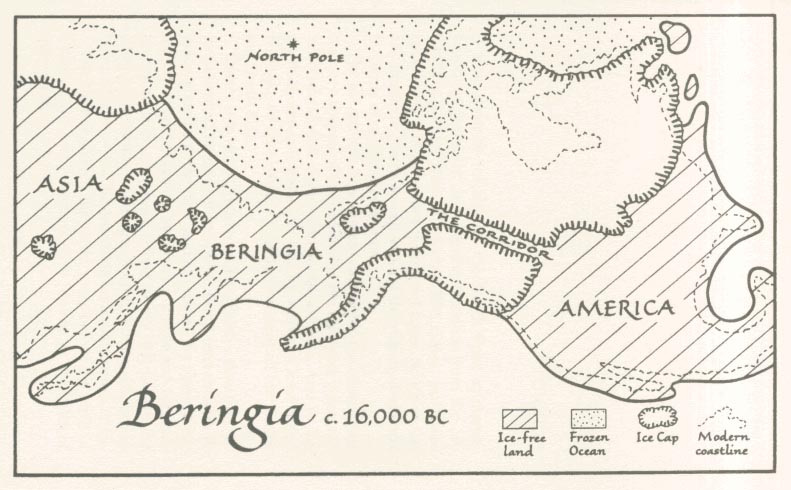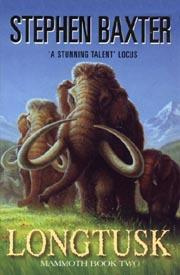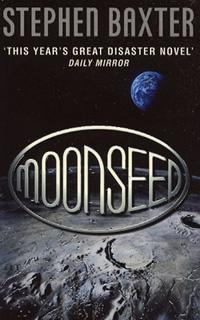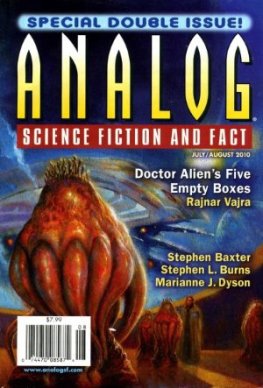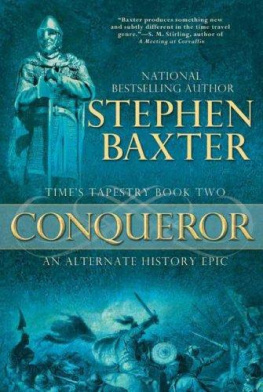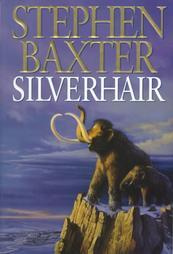Annotation
Meticulously researched, simply told and appropriate for readers of all ages, this second volume (after 1999's Silverhair) in Baxter's Mammoth trilogy brings to compelling life the complex culture of these giant creatures. It's sixteen thousand years B.C., and woolly mammoths roam the earth, inhabiting the steppes of Beringia, the land bridge linking Asia and North America. Climactic changes have caused the steppes to recede, but humans, whom the mammoths call Fireheads, pose the greatest threat to their survival. Longtusk, whose coming-of-age story this is, must save the mammoths by spearheading an epic journey. Separated from his family, Longtusk is enslaved by the Fireheads, who make him a beast of burden. But a Dreamer (Neanderthal) woman foretells his future: Longtusk will die, along with the Dreamer who once saved his life and that of the Firehead matriarch, Crocus. Although Longtusk escapes his captors and finds a steppe that will support a small mammoth herd, years later Crocus and her people return, seeking to drive the mammoths away from their habitat. Longtusk embarks on a final heroic mission to save the mammoths and meet his fate. The book's themes of ecological disaster, warfare and change resonate deeply with today's concerns. When a mastodont tells Longtusk, "You and I must take the world as it is. [The Fireheads] imagined how it might be different. Whether it's better is beside the point; to the Fireheads, change is all that matters," it's clear that humans have not changed at all.
Longtusk
by Stephen Baxter
To my niece, Jessica Bourg
Prologue
A vast sheet of ice sits on the North Pole: immense, brooding, jealously drawing the moisture from the air. Glaciers, jutting from the icecap like claws, pulverize rock layers and carve out fjords and lakes. South of the ice, immense plains sweep around the planet, darkened by herds of mighty herbivores.
The ice has drawn so much water from the oceans that the very shapes of the continents are changed. Australia is no island, but is joined to southeast Asia. And in the north, America is linked to Asia by a neck of land called Beringia, so that a single mighty continent all but circles the North Pole.
The ice is in retreat, driven back by Earth's slow thaw to its millennial fastness at the poles. But it retreats with ill grace, gouging at the land, and all around the planet there are catastrophic climatic events of a power and fury unknown to later ages. And, retreat or not, the sites of the cities of the future -- Chicago, Boston, Edinburgh, Stockholm, Moscow -- still lie dreaming under kilometers of ice.
The time is sixteen thousand years before the birth of Christ. And every human alive wakes to the calls of mammoths.
Part 1: Nomad
The Story of Longtusk and the She-Cat
Who was Longtusk?
I'll tell you who Longtusk was (Silverhair said to her daughter, Icebones). He was the greatest hero of the Cycle -- and the only Bull hero in all the Cycle's long history.
My Matriarch used to say I had a little of Longtusk's spirit in me too. And I don't know why you think that's so funny, Icebones. I wasn't always so old and frail as this...
Tell you a story? Another?
Very well. I'll tell you how Longtusk defeated Teeth-of-Death, the she-cat.
This is a story of long ago, when the world was new and rich and cold, and there were no Lost, anywhere. The mammoths were the strongest and wisest of all the animals, so much so that the others grew to rely on their strength, and the way they remade the landscape, everywhere they went.
The mammoths were the Matriarchs of the world. Everybody agreed.
Well, almost everybody.
Teeth-of-Death was a she-cat. In fact she was the ruler of the saber-tooth cats, for she was the strongest and most agile, her teeth and claws the longest and sharpest, her mind the most inventive, her cruelty the most relentless.
Every animal feared the saber-tooth cats. Every animal feared Teeth-of-Death. Every animal save the mammoths.
The mammoths were too big, too powerful. Oh, the cats could bring down a mammoth from time to time, but only the very young or the very old or the very sick. It was not an honorable business. In fact, as they glided back and forth on their great migrations, the mammoths barely noticed the cats even existed.
This, of course, drove Teeth-of-Death insane with jealousy and hurt pride.
Now, as you know, when he was a young Bull Longtusk left his Clan and traveled far and wide: from north to south, even across the seas and the lakes and the ice. Everywhere he went he gained in wisdom and stature; everybody he met was impressed by his bearing and grace; and he had adventures which have never been forgotten.
And it was this Longtusk, Longtusk the nomad, who happened upon Teeth-of-Death.
The great cat confronted Longtusk. She said, "This cannot go on."
Longtusk had been feeding on a rich stand of willow. He looked down his trunk to see what was making so much noise, and there was the spitting, agitated cat. He asked reasonably, "What can't go on?"
"Either you rule the Earth, or I do. Not both."
"Don't you think there are more important things to worry about than that?"
"No," Teeth-of-Death snapped. "Ruling is the most important thing. More important than life."
"Nonsense," said Longtusk. "If it makes you happy, I hereby pronounce you the world's most fearsome animal. There. Now we don't have to argue, do we?" And he turned to walk away. For, you see, he was wise as well as brave, and he knew that an unnecessary fight should not be fought.
But that would not do for the she-cat.
With an agile bound she ran before Longtusk and confronted him. "No," she said. "I cannot live while I know in my heart that you do not respect me."
She was surely an intimidating sight: an immense cat with jaws spread wide, sharp teeth gaping, claws that with a single swipe could disembowel even an adult Bull mammoth -- if she ever got the chance.
"You are very foolish," said Longtusk. But he faced her warily, for he knew he must meet her challenge.
And so it began. When news of the contest spread, all the animals of the world gathered around, pushing and staring.
Teeth-of-Death attacked Longtusk three times.
The first time she leaped at his face, reaching for his eyes and trunk. But Longtusk simply raised his tusks and pushed her away.
For her second attack Teeth-of-Death clambered up a spruce tree. She leaped down onto Longtusk's back and tried to use her great saber teeth to gouge into his flesh. He could not reach her with his trunk to dislodge her. But she could not bite through his fur and skin. After a time he simply walked beneath a low tree and let its branches scrape the cat from his back, and that was that.
For her third attack Teeth-of-Death hid in a bank of snow. She had decided that when Longtusk came close enough she would leap at him again, trying to reach the soft flesh of his belly or trunk. It was a clever strategy and might have succeeded, even against a hero so strong as Longtusk, for cats are adept at such deception. But, obsessed with her ambition, Teeth-of-Death forced herself to lie still in her snowdrift for several days, waiting for her opportunity.
And when Longtusk at last came by Teeth-of-Death was cold, half-starved, exhausted.
She sprang too early, made too much noise. To fend her off, Longtusk simply swept his great tusks and let their tips gouge furrows in Teeth-of-Death's beautiful golden coat.
